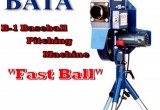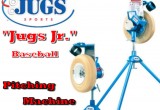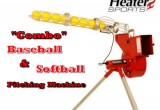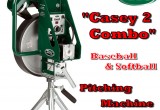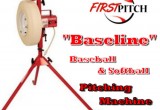Baseball Pitching Equipment Rule Changes Due To New Batting Moratorium
Online, March 19, 2012 (Newswire.com) - The composite bat moratorium extension imposed by Little League International in December of 2010 will remain in effect for the 2012 season, thus potentially affecting baseball pitching equipment sales for the foreseeable future. The moratorium's expansion extends to the Majors division, which includes 11 and 12 year old players.
Many questions raised about the ban involve the rules of course, yet the issues of manufacturing standards as well as projected sales come into view. As it stands, some bats are allowed while others are not, which may have a broader impact on baseball pitching equipment in general. All little league baseball bats must pass the drop weight standards and measurements proposed by LLI.
Composite bats contain graphite-fiber or graphite lining in the barrel portion as opposed to aluminum alloy, metal or wooden baseball bats. The composite graphite material is purported to add an extra bounce to the sweet spot on the bat's barrel. The moratorium itself prevents the use of these bats during league play to avoid any type of unfair batting advantage, but some fear that more regs will come down for other baseball pitching equipment for sale.
Steve Klein, baseball pitching equipment store owner, had this to say:
"I've been in this business for a while now, selling little league regulation gear for generations. Since the moratorium, I've been answering questions from parents about which bats are ok for their kids to use. I usually tell them that the composite bats are great for practice, but the rules are the rules and they should just stick with aluminum or wood."
The specification standards for little league baseball bats require a series of tests while meeting acceptable lengths and weights, which is the usual procedure for all baseball pitching equipment. In terms of the bat performance factor (BPF), the material used in composite bats can cause the trampoline effect when batting, which creates more elasticity at the point of impact. Baseball bat manufacturers are required to disclose performance parameters on all of their baseball bats, and these specs should not exceed what is printed on each of the bats. Wooden and/or aluminum bats have little or no elasticity, which is where the core of the controversy lies.
"Rules and regulations are here for a reason," Klein added, "But I think when it comes to baseball pitching equipment, we may be splitting hairs for no reason. These kids just want to go out and have fun and hit the ball as far as they can. If the composite bats are allowed, the game could become even more exciting and change for the better."
The Little League Majors is in compliance with the same rule imposed on the league's higher divisions in October of 2010. The VP of operations for baseball LLI, Patrick Wilson, implied that the decisions made concerning this facet of baseball pitching equipment by LLI are based on scientific testing via cause and effect, and that a gradual phase-in of these baseball bats at the present time may be a hastily made decision.
Concerned parents are being kept up-to-date on the latest information which is provided by LLI. Steve Klein is also staying in the mix from the retailer's point of view: "Composite baseball bat sales are taking a hit because of this. The baseball bats are lighter and they appear to pack more of a punch. With all of the baseball pitching equipment and batting machines I sell, it's kind of a shame that LLI hasn't come up with some sort of compromise."
